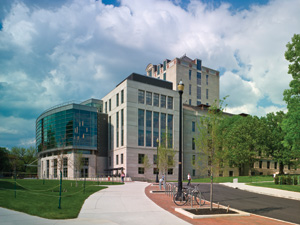The $108.7-million, 340,000-sq-ft addition and renovation of Ohio State University’s main library began with significant structural demolition on the 1910 and 1940 structure to allow for a new atrium and to create an open study environment. An additional 40,600 sq. ft. of demolition removed the building’s west facing structure to create a mixed-use space and a dedicated mechanical/electrical/plumbing room.

The renovation included a structural glazing system that specified extremely tight tolerances for the support structure. The team developed a hyper-accurate survey of the structure as a basis for a shimming strategy that met the specifications.
Owner: The Ohio State University, Columbus, Ohio
Construction Manager: TurnerSmoot, a joint venture, Worthington, Ohio
Design Firm: Acock Associates Architects, Columbus, Ohio
This project presented many unique challenges, from the tight design specifications of significant elements such as the structural glazing system, to the implementation of a shoring system to support what was called “the 200 Room,” named from the original numbering system for the grand reading room of the 1913 wing of the building. The renovation required that the two-story, barrel-vaulted reading room with an ornate plaster ceiling be restored to its original grandeur. In the mid 1960s, a decision had been made to split the 200 Room into two floors. The current renovation removed the added floor and restored the plaster.
This destination facility is a gateway to print and electronic information, housing more than 1.25 million books, while providing ease of Internet and electronic search access for thousands of faculty and students daily. The library is also a meeting place and a study and research center, providing a broad variety of inviting individual and collaborative study and workspaces.


Post a comment to this article
Report Abusive Comment